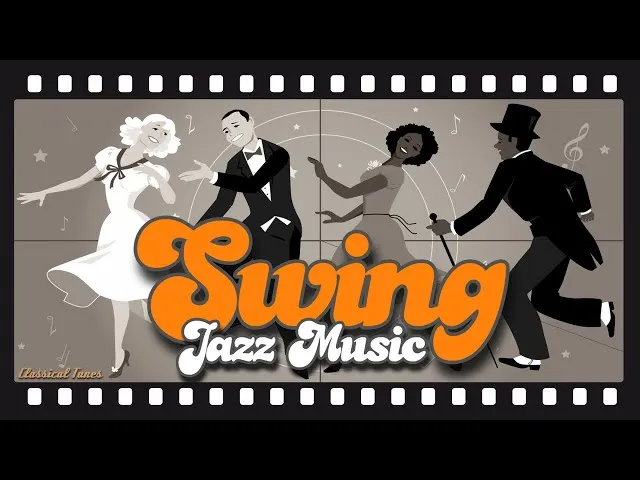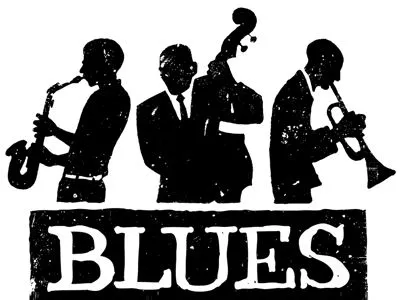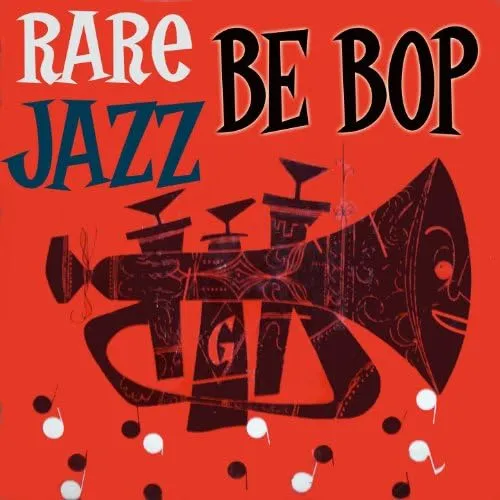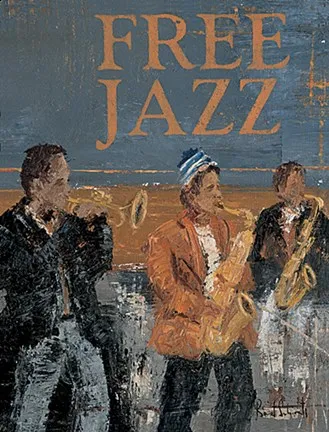Exploring the Styles of Jazz
Jazz is music that fills the heart with freedom, improvisation, and emotional richness. One of the most amazing aspects of jazz is its variety of styles, each with its own unique character, energy and history. From the rhythmic swing to the deep melancholy of the blues, the world of jazz is rich with different facets that can amaze and inspire the listener.
Swing: Rhythms That Make You Move

Origins and Development
Swing emerged at a time when jazz was evolving into a mass culture phenomenon. Its roots can be traced back to the African American communities of New Orleans and Chicago, where musicians combined elements of blues, ragtime, and African American traditions into a new, energetic sound. However, swing gained widespread recognition and popularity in the 1930s and 1940s, when big bands such as the Duke Ellington, Count Basie, and Glenn Miller orchestras began to perfect its sound.
Energy and Rhythm
The foundation of swing is lively, pulsating rhythms that call for dancing and fun. The bass lines and rhythm sections of the big band create a formidable sonic foundation upon which virtuoso solos of instruments such as saxophone, trumpet and trombone are built. This complex layer of sounds gives swing its characteristic assertiveness and dynamics.
Jazz Age and Cultural Influence
Swing not only became a vibrant musical phenomenon, but also had a significant cultural impact. During the Great Depression, it became the music of hope and solace for many Americans looking for a way out of hard times. Its energy and optimism became a symbol of struggle and survival.
Legacy
Swing continues to live and inspire in our time. Its melodies are heard on concert stages around the world, and dancers continue to perform its characteristic moves. Moreover, swing has inspired many other musical genres, including rock ‘n’ roll and rhythm and blues, which emphasizes its importance and influence.
Famous Swing Jazz Performers
Famous musicians and orchestras that have made significant contributions to the development and popularization of swing jazz include:
Duke Ellington and his orchestra: A renowned American pianist, composer and big band leader, Duke Ellington became a symbol of the swing era with his energetic and creative performances.
Count Basie and His Orchestra: Led by Count Basie, this band became famous for its harmonious arrangements and dynamic rhythms, making it one of the most popular orchestras of its time.
Glenn Miller and His Orchestra: With their famous hits such as “In the Mood” and “Moonlight Serenade,” Glenn Miller and his orchestra brought swing jazz to the wider consciousness of the American public.
These and other talented musicians not only defined the sound of swing, but also left an indelible mark on the history of jazz music. Their work continues to inspire and delight musicians and listeners around the world.
Blues: Depth of Emotion and Expression

The blues is an ancient, profound and exceptionally human genre of music that has the power to transform pain and sorrow into expressive art. As an integral part of the jazz world, the blues leaves an indelible mark on the hearts of listeners and embodies a spirit of liberation and hope.
History and Emergence
The blues emerged in the late 19th century in African American communities in the southern United States as an expression of pain, suffering, and hope. The genre originated from African American plantation work traditions and church hymns, and was heavily influenced by African musical traditions. The blues became an expressive way of expressing the emotions and experiences that characterized African American life at the time.
Emotional Depth and Character
Key features of the blues include deep and heartfelt lyrics characterized by its melancholy and a distinctive song structure that often includes repetitive musical phrases and the “12 bars” form. Blues music is often performed on guitar, harmonica, piano or saxophone, and is often complemented by the expressive vocals of the performer.
Famous Blues Performers
The blues has spawned many great musicians whose work has had a huge impact on the world of music and particularly on the jazz genre. Among them:
Bessie Smith: The queen of the blues, Bessie Smith, with her powerful and deep voice, left an indelible mark on the history of the music by recording such hits as “St. Louis Blues” and “Empty Bed Blues.”
Robert Johnson: A delta blues legend, Robert Johnson is considered one of the most influential musicians in history. His guitar technique and profound lyrics have inspired many performers after him.
Ma Rae Robinson: Known as the “Queen of the Blues,” Ma Rae Robinson was not only one of the most influential blues singers, but also an accomplished pianist and composer.
Bebop: Improvisation and Virtuosity in the World of Jazz

Bebop, or b-bop, is one of the most intelligent and technically challenging styles of jazz that emerged in the mid-twentieth century. The invention of this genre was a reaction to musicians’ desire to expand the scope of jazz and create something new, refreshing and expressive. Bebop became a platform for musicians to create and experiment, showcasing their virtuosity and ability to improvise.
History and Emergence
Bebop emerged in the late 1940s in New York City and other major U.S. cities as a result of a collaboration of musicians who sought to innovate in jazz. It represented a departure from the traditional harmonies and forms of jazz music, instead emphasizing complex harmonic changes and fast playing.
Improvisation and Virtuosity
The main characteristics of bebop are complex harmonies and fast tempos, requiring a high degree of technical skill and the ability to improvise. Bebop musicians often play fast, using complex rhythms and harmonies to create emotionally intense and intellectually stimulating music.
Famous Bebop Performers
Bebop has spawned many great musicians whose work has had a huge impact on the world of music and especially the jazz genre. Among them:
Charlie Parker: Known as “Baird,” Charlie Parker is considered one of the greatest saxophonists and composers in jazz history. His technique on the alto saxophone and his ability to improvise ushered in a new era in music history.
Dizzy Gillespie: A great trumpeter and composer, Dizzy Gillespie was one of the leading figures of bebop and modernism. His colorful trumpet playing and experimentation with harmonies and rhythms made a significant contribution to the development of jazz music.
Thelonious Monk: A renowned pianist and composer, Thelonious Monk was one of the most influential bebop musicians. His original piano playing style and innovative compositions have become an integral part of the jazz canon.
Legacy and Influence
Bebop has had a tremendous influence on the development of jazz as well as other genres of music. Its technical complexity and freedom of improvisation inspire musicians around the world to this day, making it one of the most important and influential styles in jazz history.
Free Jazz: Freedom of Improvisation and Experimentation

Free jazz is a style of jazz that deviates from the traditional forms and structures of music adopted by the genre. Instead of strict melodic and harmonic frameworks, free jazz offers musicians freedom of expression and experimentation, making it one of the most avant-garde and innovative movements in the world of music.
History and Emergence
Free jazz emerged in the mid-twentieth century in the United States during a period of intense social and cultural change. The style was a response to musicians’ desire to break free from traditional constraints and discover new avenues of expression. During the bebop and modern era, free jazz became a platform for experimentation and creative freedom.
Freedom of Improvisation and Expression
The main aspect of free jazz is the freedom of improvisation. Musicians play without rigid structures or templates; instead, they create music on the fly, reacting to the moment and being inspired by each other. This allows them to express their emotions and ideas in the most immediate and spontaneous way possible.
Experimentation and Innovation
Free jazz also differs from other styles of jazz in its commitment to experimentation and innovation. Musicians use different sound effects, unconventional instruments, and unusual playing techniques to create unique sounds and textures. This makes free jazz one of the most diverse and exciting genres of music.
Famous Free-jazz Performers
Free-jazz has spawned many talented musicians whose work has had a huge impact on the world of music and especially the jazz genre. Among them:
John Coltrane: Known for his deep and expressive sound on the saxophone, John Coltrane became one of the leading figures of free jazz. His works such as “A Love Supreme” are considered classics of the genre.
Ornette Coleman: The inventor of the “free improvisation” style of free jazz, Ornette Coleman was one of the most innovative musicians of his time. His albums such as “The Shape of Jazz to Come” are considered milestones in music history.
Sun Ra: An eccentric composer and arranger, Sun Ra, or Santell Delay Smith, was one of the most notable figures in the world of free jazz. His work with Arkestra attracted attention for its unique sound and aesthetic.
Legacy and Influence
Free jazz has had a huge impact on the development of music in general. Its freedom and experimentation inspire musicians in all genres, and its innovations remain relevant and inspire new generations of musicians and listeners.
Conclusion
Jazz styles represent a rich musical heritage that encompasses a wide range of sounds, from early forms such as Dixieland and swing to more contemporary movements such as fusion and modern jazz. Each of these styles makes its own contribution to the genre, enriching it with unique rhythms, harmonies and improvisations. There is room for everyone in the world of jazz, and regardless of listening preferences, everyone can find something that captures their heart and soul in this great musical form.
-
What styles of jazz are there?
Blues, free jazz, bebop, swing.
-
What is the basis of swinging?
The foundation of swing is lively, pulsating rhythms that call for dancing and fun.
-
What's special about Bebop?
The main differences of bebop are complex harmonies and fast tempos, requiring a high degree of technical skill and the ability to improvise

